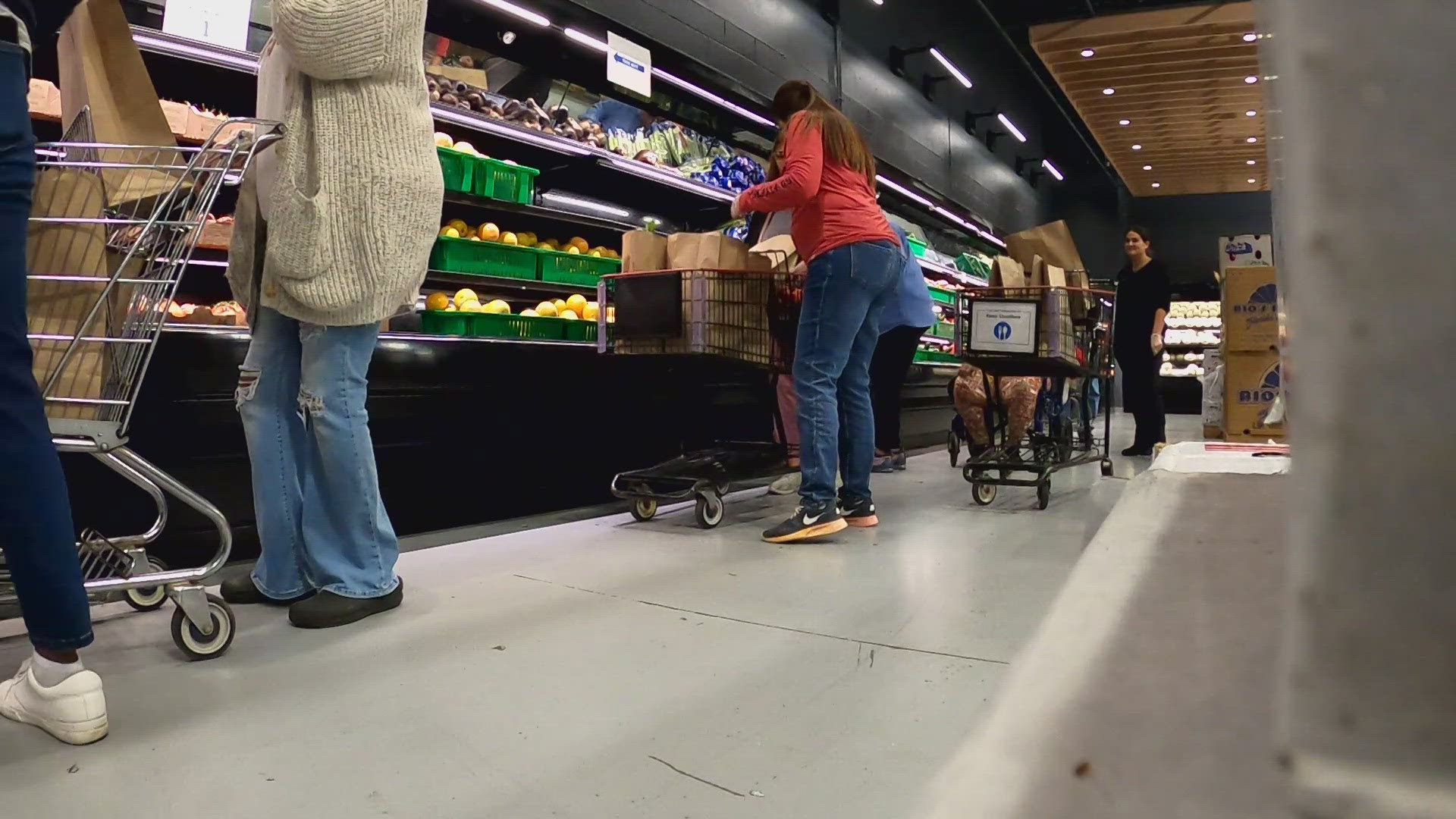CLEVELAND — On South Waterloo Road, the Greater Cleveland Food Bank’s Community Resource Center is busy as people stream in to access the Healthy Choice Market and more than a dozen partners housed within the building.
As people file through the market’s grocery store-style set up, complete with shopping carts, they’re able to choose from a variety of fresh, frozen and shelf-stable food items twice a month. In addition to food assistance, they can also utilize resources like the MetroHealth Clinic, United Way of Greater Cleveland and Shoes and Clothes for Kids, among other partners and nonprofits who have offices on site.
“It makes sense to have the resources most favorable for our community under one roof,” said Tiffany Scruggs, executive director at the Community Resource Center. “We know there's transportation barriers, and also with inflation, it just made sense. There's national data that supports it. But we surveyed our neighbors and they told us exactly what services to have here on site.”
In addition to more than a dozen co-located nonprofits, Scruggs said they also bring in additional organizations and visiting partners to provide a variety of resources to the community.
Scruggs said while the food bank’s mission is to ensure people have the food they need daily, the vision of the Community Resource Center is to address food insecurity and poverty.
“We're focused on addressing the root causes of why people are in need of food. And so the various organizations on site, in terms of the care that each organization offers our community, is such a high benefit,” she said. “So we've really moved and have a paradigm shift in terms of a food bank to really address the reasons for food insecurity and also poverty.”
The center opened on Nov. 2, 2023, with the expectation that it would serve 30,000 people in its first year, according to Scruggs. By October, a month shy of its one year anniversary, it had served more than 47,000 people.
“We've reached a new all-time high, unfortunately, in terms of the amount of people that we've served throughout our entire network,” Scruggs said. “We've served over 424,000 people amongst our 1,000 partner network. And so that is a new all-time high. You know, last year we served about 401,000.”
One of the people served is Olivia Ward, a Cleveland mother who utilizes the resources at the Community Resource Center regularly.
“I come twice a month for the food, and then I also come once a month for the animal food because it’s always handy. Sometimes I run out, so it’s really helpful,” she said. “Also the diapers, because I have a 2-year-old, so they also do pull ups so those are very helpful.”
Ward described her experiences visiting the Community Resource Center as “awesome,” calling the center organized, and adding that her children enjoy spending time in the playroom on site as she accesses resources.
“It just feels like a helping hand, it really does,” she said.
Ward accesses diapers via the Diaper Bank of Greater Cleveland. According to founder and executive director Nakeisha Wells, the bank helps families with access to diapers, feminine hygiene products and basic household items, and connects expecting mothers with additional services.
“I think it's really important that a family, when they're in need of services, that they're able to access them under one roof, that they're not having to deal with the challenges of traveling from place to place to access their basic needs items, and also the support services,” Wells said. “It's just really amazing to see so many services all under one roof. I can't tell you, you know, how many families are grateful that they are able to not only get diapers, but they're able to receive food items and also clothing.”
Wells explained the importance of clean diapers not only for a child’s safety, but because of the impacts a lack of clean diapers can have on families.
“Without enough diapers, many parents are unable to access childcare,” she said. “So for most childcare service centers, they require that the parents have a daily supply of diapers in order to receive services. So what happens is when they don't have enough diapers, it creates sort of a domino effect where they're also unable to work. And when the family's unable to work, they're of course unable to provide their other needs, like being able to pay their bills.”
Scruggs said the Community Resource Center has “been coined as a national model,” with people coming from more than 52 food banks from different states and even from the United Kingdom to see the work being done in Cleveland.
“It's such a humbling opportunity to serve in this capacity and have such far reach, and also a place where our community members can have hope instilled to help them understand their next place that they want to go in life.”

